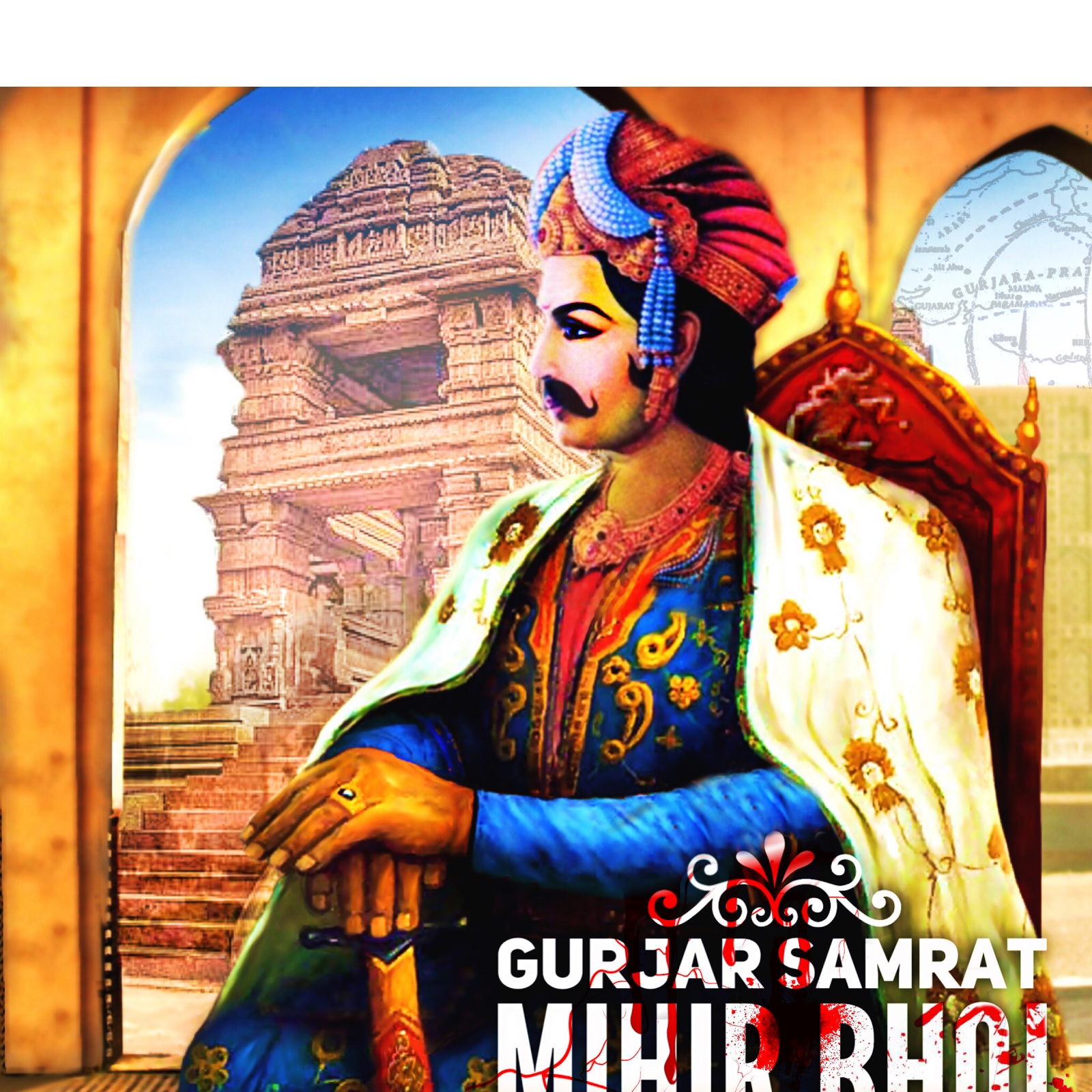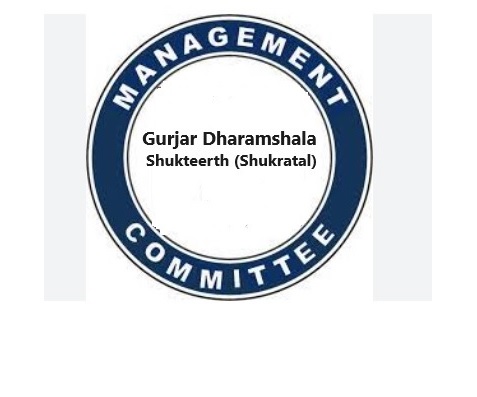
Gujjar community which inhabit not only in India but in countries like Pakistan,Afganistan,Iran and Rassia also. Though in different countries the word “Gujjar”has come to be known differently but yet it has not changed altogether e.g. “Gurjar”, “Gojar”,” Gorjar”,” Godar” and kochar or “Gorj” etc.
Historians have different opinions of their origins and their coming to India.Some historians are of the view that they were the inhabitants of India herself long ago while others say that they had migrated to India from Central Asia.It is also said that probably they might have settled in the Indian green territory during 5th or 6ht century A.D.
The historians who take them as aborigines of India , say that the three sects of Kshatrias-Suraj Vanshi, Chandra Vanshi and Yadav Vanshi had amalgamated with Gujjars after the war of Mahabharta. Prior to the Mahabharta war ,kshatrias used to be the sole rulers but their power and influence declined considerably after war.Lord Krishan Ji with some of the kshatrias who survived the Mahabharta war abandoned Mathura and went towards the west to Dwarika.
The ancient kshtaria clans thronged around Lord Krishna who united them into a class and named it as “Gujjar” and their Govt. come to be known as” Gujratar” the first capital of which was established at Dwarika.
Pandit Vasudeva Prasad, a famous Sanskrit Pandit of banaras, has proved through ancient Sanskrit literature that the word” Gujjar”used to be spoken after the names of antique,Kshatrias Another Sanskrit scholarRadhakant, is of the opinion that the word Gujjars was for Kshatrias .Scientific evidence has also proved that the Gujjar belong to Aryans.
Before the advent of Muslims from outside India, their Sanskrit history and dialect showed that they were Gujjars.So much so that the Arab invaders also named them as Gujjars in their writings.
Baij Nath Puri,a famous historian of India , in his book ‘The history of Gujjars and Pratharas’ and another historian Mr. K.M.Munshi in his book ‘The glory that was Gujjar Desh’,Rana Ali Hassan Chouhan, in his book ‘The history of Gujjars’, Mr. Jatider Kumar Verma in his book “Gujjar Itihas ” by way of historical records,have fully proved that they belonged to Aryan Dynasty and refuted that they had come from out side India and settled here.
In 78 AD they had established two reigns of two dynasties which were those of Nagars and Kushans,one of which ruled Patna which included Bengal, Bihar,, Orissa,Utter Pradesh and central India of Arya Varta.This was ruled by Gujjar Dynasty of Nagars whose head was Maharaja Sabhao Nagar. Their second kingdom was that of Peshawar which spread upto the river Jamuna and Afghanistan.This kingdom was ruled by the dynasty of Kushan Gujjars whose king was emperor Kanishka.
One of the edicts revealed that Kushans had named the territory of Sutlej as Gujrat.During the reign of king Kanishka the Subhao Nagar,the Aryavatra was at its peak of glory.These kingdoms had spread their trade upto Europe.
The Gujjar reign of emperor Kanishka had spread upto Central Asia as a result of which the Gujjars could be seen dwelling in Afghanistan,Russia and Iran even these days.It is believed that the emperor Kanishka had established his capital somewhere in Kashmir.It would be wrong to say that the present territorial boundaries of Kashmir are correct,rather it was far wide spread than what it is today.The brave kings of those bygone days had subdued the countries like Kabul and Kandhar.Emperor Kanishka ruled between 78 and 130 centuries A.D.After the downfall of the Gujjars,Nagar and Kushan dynasties,the Gujjars again regained power during the 5th century A.D.
In the 6th century A.D. when the Gupta Rule was in its last phase and its downfall was imminent the Gujjars overpowered the Guptas and founded a strong Gujjar kingdom.They began to protect the country and started to take effective steps for its all-round progress. After 7th century A.D. the Gujjar rulers established their full authority over the entire Northern India. Thereafter the Gujjar rulers, named several provinces, cities,grand buildings,temples and fortresses after the name of Gujjars.The Gujjar kings felt proud of their being called Gujjars.Several edicts found so far bear testimony to this fact.An edict of 1139 AD which was found in Dohar,Jai Singh Barh Raj,has been stated to be the king of Gujjar Mandal.
The king Prithvi Raj Chouhan united the kingdoms of Ajmer and Delhi, when he ascended the Throne.He established a federation by the name of “Gujjar Mandal “
From the historical evidences,it becomes clear that during the reign of King Meharbhuja the banner of Gujjar rule was waving all over North India.
During the Gujjar rule,the gojri language was made as an official language and all official work used to be carried out in it.In 9th century A.D. and after this period, the Arab travelers who wrote about Gujjar History, presented the fact in distorted manner because at that time only Gujjar community,had opposed the Arabs tooth and nail.Inspite of all this the Arabs praised them for their valour.
The Arab Historians recognisd the Gujjar Rule as trrhe most stabe and powerful.After ruling for centuries together over India,their downfall began during the reign of Muslim rulers.In 1697 Al-ud-Din Khilji overran Analwada Gujrat resulting in the end of Gujjar Rule in India.All the territories that belonged to Gujjara rulers,, were taken away from them and they were once again subjugated by others.They left their territoriesand took shelter in mountains and deserts.Gujjars were ruthlessly suppressed and presecuted.They were even deprived of the bjobs.
Numerous plots began to be hatched against Gujjars.Under these bad and hostine conditions some Gujjars ran away for safety while others disliked to be called “Gujjars ” and in a way they converted themselves in communities, other than Gujjars. Some went into hiding in mountains and forests, and began to call themselves as Rajputs and not Gujjars. Lateron,some Persian historians recognized them as Rajputs as they failed to under their identity.Even the English rulers recognized them as Rajputs.The name of Rajput became so popular among the historians that the names of Gujjars disappeared from the history.
The Archaeological department during its research found valuable edicts of the past viz. the period which prevailed before the foreign Muslim rulers. All such edicts showed the writings of the Gujjar rulers. No evidence came forth which would show a link between Rajputs and Gujjars.
Experts are of the view that by their classification, Gujjars are almost similar everywhere may it be India, Pakistan ,Iran, Afganistan or Russia or anywhere. They resemble each other. They have their own mother -tongue which is Gojri and the interesting thing in it is that how far apart they may be from one another, their tongue is similar in all countries.
Gujjar community has a strong internal organization. Different groups of Gujjars living in bulk numbers feel proud of being called “Gujjars “.Presently, there are Hindu, Muslims ,Sikhs and Jain Gujjars in India. They are kind to one another and have no aversion for one another.


